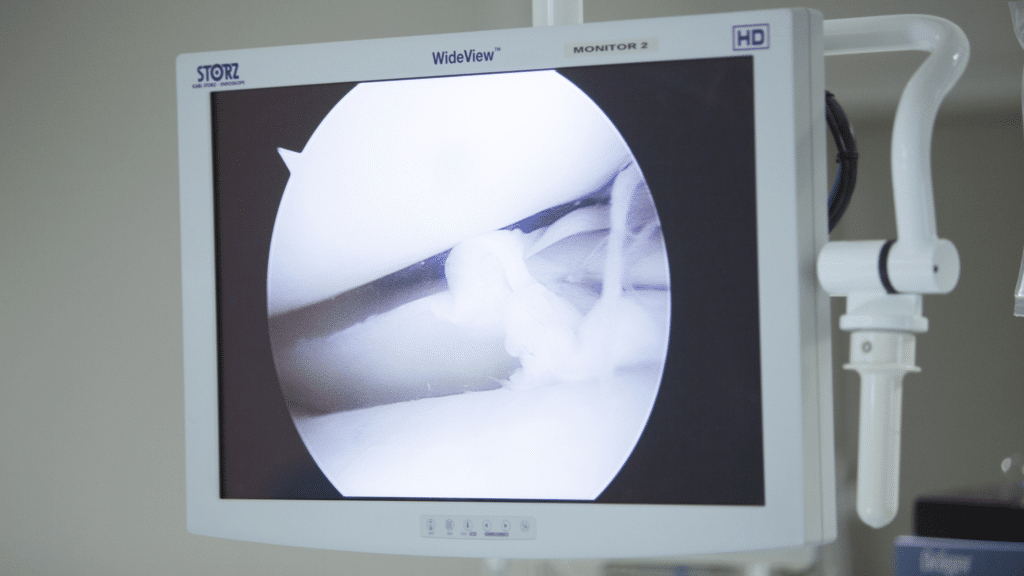Arthroscopy, a surgical technique often employed by orthopaedic physicians, is utilized to diagnose and treat disorders that occur inside a joint. The term ‘Arthroscopy’ is derived from two Greek words, ‘arthro’ meaning joint, and ‘skopein’ meaning to observe. Essentially, arthroscopy allows medical professionals to examine and treat the inner workings of a joint.
The Science Behind Arthroscopy
Arthroscopy is performed by making a minor incision in the patient’s skin, followed by the insertion of pencil-thin instruments equipped with a tiny lens and a lighting system. These tools help magnify and brighten the joint structures, making it easier for the surgeon to observe and carry out the necessary procedures.
The light transmitted through fiber optics to the arthroscope allows the surgeon to view the interior of the joint on a video monitor. This eliminates the need for a larger incision that open surgery would necessitate.
Conditions Treated Through Arthroscopy
There are several conditions that arthroscopy can effectively treat. These include:
- Inflammation: An example is synovitis, a condition that results in the inflammation of the tissues surrounding the knee, shoulder, elbow, wrist, and ankle joints.
- Acute or Chronic Injuries: These range from rotator cuff tendon tears and shoulder impingement to recurrent dislocation in the shoulder and meniscal (cartilage) tears in the knee.
- Arthritis-Related Problems: Certain issues associated with arthritis can also be treated through arthroscopic procedures.
While arthroscopy is highly effective, it is crucial to remember that a comprehensive diagnosis is the first step. This involves a thorough medical history, a physical examination, and imaging studies like x-rays, MRI scans, or CT scans.
“Arthroscopy is not just a treatment; it’s a journey. From diagnosis through recovery, our team is here to support you every step of the way.” – Anonymous Orthopaedic Surgeon
Arthroscopic Procedures
Arthroscopy can be used alone or in combination with open surgery. The procedures vary depending on the condition and can include rotator cuff repair, torn cartilage repair or resection, anterior cruciate ligament reconstruction, synovium removal, carpal tunnel release, torn ligament repair, or removal of loose bone or cartilage.
While nearly all joints can be viewed with an arthroscope, six joints are most commonly examined:
- Knee
- Shoulder
- Elbow
- Ankle
- Hip
- Wrist
Developments in fiberoptic technology and new techniques by orthopaedic surgeons may allow other joints to be treated more frequently in the future.
The Arthroscopic Surgery Process
Arthroscopic surgery, though less invasive than open surgery, still requires anesthetic and specialized equipment in a hospital or outpatient surgical suite. The type of anesthetic—general, spinal, or local—depends on the joint or suspected problem.
The surgeon makes a small incision to insert the arthroscope and may make additional incisions to view other parts of the joint or insert other instruments. Once the necessary adjustments are made, the incisions are covered with a dressing, and the patient is moved to a recovery room.
Post-Surgery Recovery
Recovery after arthroscopy is typically quicker and less painful than open surgery. Patients usually return home several hours after surgery. The small puncture wounds take a few days to heal, and specific exercises may be recommended to aid in recovery.
Returning to work or daily activities may take a few days, and athletes or physically fit individuals can sometimes return to athletic activities within weeks. However, it’s crucial to remember that recovery time varies depending on the patient’s unique condition and procedure.
Potential Complications
Although rare, complications can occur during or after arthroscopy. These include infection, deep vein thrombosis or DVT (blood clots in a vein), excessive swelling or bleeding, damage to blood vessels or nerves, and instrument breakage. However, these complications occur in far less than 1% of all arthroscopic procedures.
Conclusion
Arthroscopy, while often used to treat athletes, is a valuable tool for all orthopaedic patients. It is generally less invasive than open surgery and allows for a quicker recovery. However, as with any medical procedure, it’s essential to have a thorough discussion with your healthcare provider to determine the best treatment for your specific condition.
Remember, your healthcare provider is your partner in this journey towards pain relief and improved joint function. Trust in their expertise and take every step confidently, knowing you are not alone in this journey.

